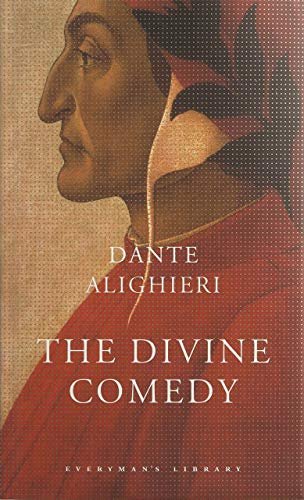The Divine Comedy (The Inferno, The Purgatorio, and The Paradiso) Summary by Dante Alighieri
The Divine Comedy is an Italian narrative poem by Dante Alighieri, written between 1308 and 1321, shortly before the author’s death.
The poem is divided into three parts: Inferno (Hell), Purgatorio (Purgatory), and Paradiso (Heaven). The plot of the poem is about the author’s journey towards God, and it is concerned with Christian entities and realms of the afterlife.
The work is regarded as a comedy because, in a classical context, as opposed to a contemporary one, a comedy is a work that deals with explaining the beliefs of an ordered universe.
People Also Read: Long Time No Sea by Portia MacIntosh
This article gives you a comprehensive summary of this novel
| Title | The Divine Comedy (The Inferno, The Purgatorio, and The Paradiso) |
| Author | Dante Alighieri |
| Year of Publication | January 25, 2023 |
| File Format | Kindle, Hardcover |
| Language | English |
| Number of Pages | 1245 pages |
| Customer Reviews | 3.9 out of 5 stars |
| Best Sellers Rank | #46,519 in Kindle Store, #1 in Italian Literary Criticism (Kindle Store), #1 in Italian Poetry (Kindle Store), #1 in Ancient & Classical Literary Criticism (Kindle Store) |
Information about the book “The Divine Comedy (The Inferno, The Purgatorio, and The Paradiso)” written by Dante Alighieri
The Divine Comedy (The Inferno, The Purgatorio, and The Paradiso) Summary by Dante Alighieri
The Divine Comedy is an epic poem by Dante Alighieri, written in the early 14th century. It is divided into three parts: Inferno (Hell), Purgatorio (Purgatory), and Paradiso (Heaven). The poem is an allegory of the soul’s journey to God, and it has been interpreted on many different levels, including literal, moral, allegorical, and anagogical.
Dante begins his journey in the Inferno, where he sees the punishments that await those who have sinned. The Inferno is divided into nine circles, each of which is reserved for a different type of sin. The deeper into the Inferno Dante goes, the more serious the sins become.
In the Purgatorio, Dante sees the souls of those who are purging their sins so that they can enter Heaven. The Purgatorio is divided into seven terraces, each of which corresponds to a different deadly sin. Dante must climb each terrace in order to purge his own sins.
In the Paradiso, Dante sees the souls of those who have lived virtuous lives and are now enjoying the rewards of Heaven. The Paradiso is divided into nine spheres, each of which is associated with a different celestial body. Dante ascends through each sphere until he finally reaches the Empyrean, where he sees God and the blessed souls.
Click the link below to read the complete novel online
Read Also: The Sister-in-Law by AJ Carter
Frequently Asked Questions
Dante wrote the Divine Comedy to teach moral and religious truths. He wanted to show people the consequences of sin and the rewards of virtue.
The number three is a significant number in the Divine Comedy because it represents the Trinity (God the Father, God the Son, and God the Holy Spirit). It also represents the three parts of the soul (intellect, will, and emotion).
The ending of the Divine Comedy is significant because it represents Dante’s union with God. It is a vision of perfect love and happiness.
The Divine Comedy has had a profound impact on Western culture. It has been translated into many languages and has been adapted into numerous works of art, literature, and music. The Divine Comedy is considered to be one of the greatest works of literature ever written.
Conclusion
The Divine Comedy is a complex and challenging work, but it is also one of the most rewarding and influential pieces of literature ever written. It is a work of great beauty, wisdom, and compassion, and it continues to speak to readers today.
